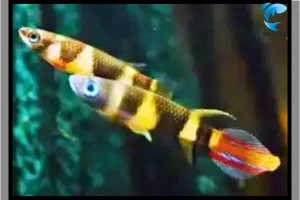Types of Blenny Fish | A Journey of Unique Varieties Blenny
Published: 29 Feb 2024
Welcome, fellow enthusiasts, to a journey of uncovering the fascinating world of blenny fishes! In this blog, we will delve into the diverse array of blenny species, unveiling their unique characteristics and exploring the enchanting realm they inhabit.
Have you ever wondered how many types of blenny fish exist, and how they look? Fear not, for this blog is here to enlighten you about the various types of blenny fish and their distinctive appearances. Prepare to immerse yourself in the discovery of these remarkable creatures as we embark on this exciting journey together.
What is Blenny Fish?
Blennies are a diverse group of small fishes belonging to the “Blenniidae family.” They exhibit a wide range of adaptations, allowing them to thrive in both saltwater and freshwater environments, depending on the species.
These elongated fish are renowned for their bottom-dwelling behavior, often found perched among rocks or hiding in crevices. They are characterized by various colors, patterns, and markings, making them a visually striking addition to any aquarium. From vibrant hues to intricate patterns, blennies add a unique charm to aquatic habitats, captivating enthusiasts with their beauty and behavior.
10 Popular Types of Blenny Fish
There are indeed 833 species of blenny spread across 130 genera, showcasing the remarkable diversity within this group of fish. However, in this blog, we will focus on discussing some of the most popular and unique varieties of blennies. Let’s embark on an exploration of these fascinating creatures and uncover their intriguing characteristics.
Midas Blenny
The Midas Blenny, scientifically known as “Ecsenius Midas,” is a popular species prized for its unique behavior and striking coloration. Native to the warm waters of the tropical and subtropical Indo-Pacific region, this species is highly sought after by aquarium enthusiasts.
Characterized by its distinctive golden-yellow body adorned with black markings and blue highlights around the eyes, the Midas Blenny exudes elegance and charm. However, it is important to note that this species can display aggressive behavior towards other blennies and exhibit lively behavior in general.
Due to its brilliant coloration and captivating demeanor, the Midas Blenny is a trendy choice for marine aquariums. However, caring for this fish can be challenging, as it requires a fully maintained tank with ample rocks and hiding spots to thrive. Providing a suitable environment is essential for the well-being of the Midas Blenny and ensures that its vibrant colors continue to shine in captivity.
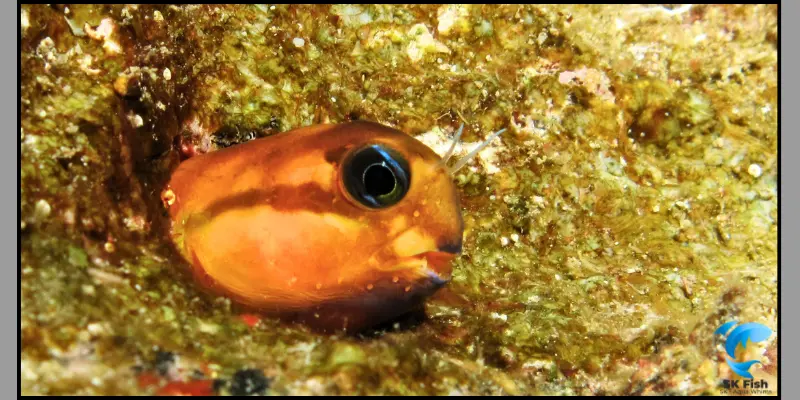
Scooter Blenny
The Scooter Blenny, scientifically known as “Synchiropus Occelatus,” is a popular species among aquarium enthusiasts due to its eye-catching color pattern, featuring black spots and a large head. Also referred to as the “Scooter ORA Dragonet,” it belongs to the Dragonet family.
Measuring around 4 to 5 inches in size, the Scooter Blenny is relatively small and is commonly found in the tropical and subtropical regions of the Indo-Pacific. These fish typically inhabit rocky reefs and shallow coastal reefs.
Known for their peaceful nature, Scooter Blennies are a favored choice for marine aquariums. They are hardy and adaptable creatures that thrive in well-maintained tanks with proper care. With their stunning appearance and captivating behavior, Scooter Blennies never fail to fascinate marine enthusiasts.
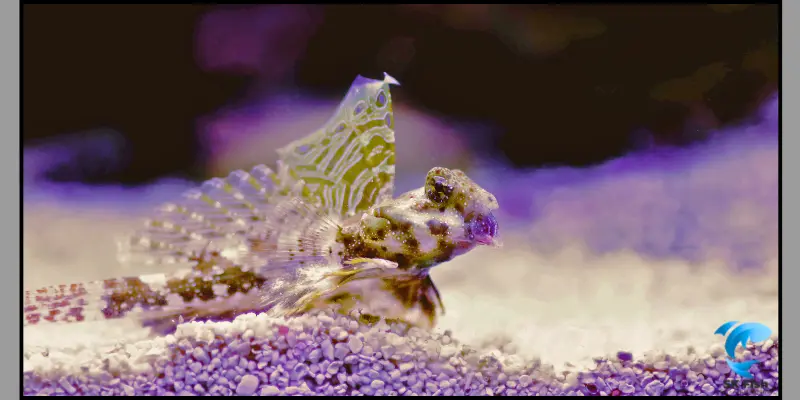
Starry Blenny
The Starry Blenny, scientifically known as “Salarias Ramosus,” captivates aquarium enthusiasts with its unique coloration adorned with blue dots on its body. Its vivid colors and intricate markings make it a popular choice among hobbyists.
Found in the Indo-Pacific regions, the Starry Blenny typically inhabits rocky, coral, and shallow coastal reefs. Despite its small size, growing up to 4 inches in length, it possesses a peaceful demeanor with a playful nature.
In captivity, providing a suitable environment and a varied diet are essential for the well-being of the Starry Blenny. It thrives in a well-maintained tank equipped with live plants, rocks, and substrate to recreate its natural habitat. By ensuring a conducive environment, aquarium enthusiasts can enjoy the beauty and charm of the Starry Blenny in their tanks for years to come.
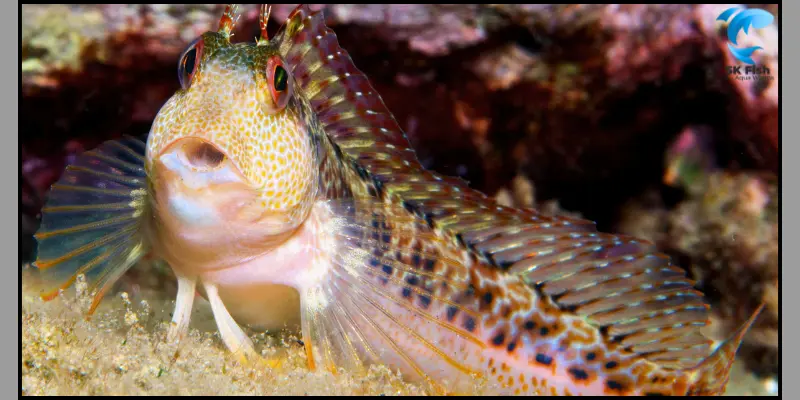
Canary Blenny
The Canary Blenny, scientifically known as “Meiacanthus oualanensis,” is highly sought after for its vibrant yellow hues with a light green head, making it a captivating addition to any aquarium enthusiast’s collection.
Endemic to the tropical and sub-tropical Indo-Pacific region, specifically originating from the western Pacific Ocean, the Canary Blenny is known for its peaceful and adaptable nature. Growing up to 4 to 5 inches in length, these fish are not aggressive and are renowned for their engaging behavior.
Despite their easy adaptability, it is crucial to provide a fully maintained tank equipped with ample rocks, live plants, and a proper diet to ensure the well-being of Canary Blennies. By creating a conducive environment that mimics their natural habitat, aquarium enthusiasts can enjoy the beauty and charm of these remarkable creatures in their tanks for years to come.
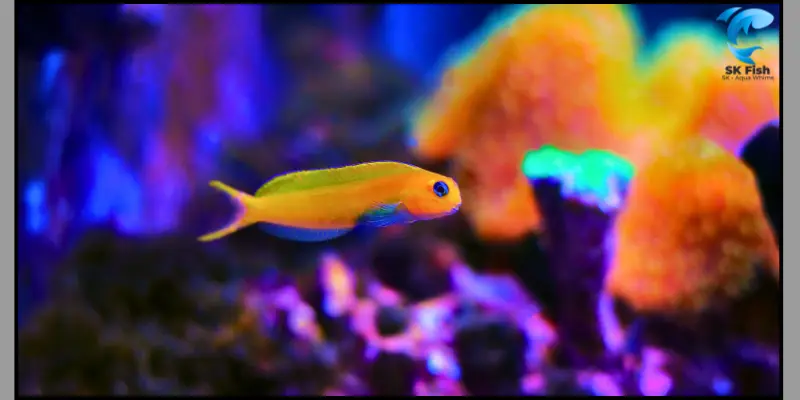
Striped Blenny
In the intricate tapestry of marine life, the Striped Blenny stands out for its unique sleek, slender body adorned with vertical yellow and black stripes. This fascinating fish is a popular choice among aquarium enthusiasts, admired for its striking appearance.
Scientifically known as “Meiacanthus grammistes,” Striped Blennies can grow up to 3 to 4 inches in length. Native to various Indo-Pacific regions, they are commonly found inhabiting coral reefs and rocky outcrops at depths of up to 50 feet.
In captivity, providing a well-maintained tank is essential for the well-being of Striped Blennies. This includes ample hiding places, live plants, substrate, and a varied diet to meet their nutritional needs. By creating an environment that mimics their natural habitat, aquarists can ensure the health and vitality of these captivating creatures.
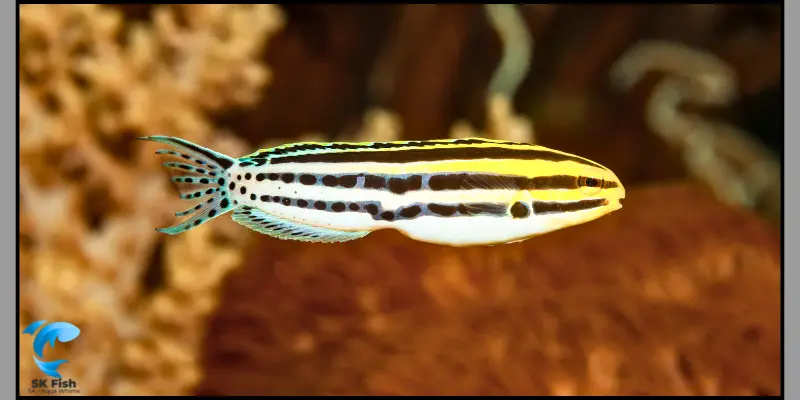
Algae Blenny
The Algae Blenny boasts an elongated body with subtle hues of green, brown, or tan, and is particularly renowned for its long eyelashes. This species is highly valued among aquarium enthusiasts and is a popular choice for many.
Scientifically known as “Salarias fasciatus,” the Algae Blenny is also commonly referred to as the “lawnmower blenny.” Growing up to 5 inches in length, these fish are native to the Indo-Pacific region and are typically found in diverse habitats, including coral reefs, rocky outcrops, and shallow coastal waters.
In captivity, the Algae Blenny remains a sought-after species for aquarium enthusiasts. To ensure the longevity and well-being of these fish, it is essential to provide them with a healthy environment. This includes maintaining a well-established tank with plenty of rocks and live plants, as well as offering a varied diet to meet their nutritional needs. By recreating their natural habitat in captivity, aquarists can enjoy the presence of these fascinating creatures while ensuring their optimal health and vitality.
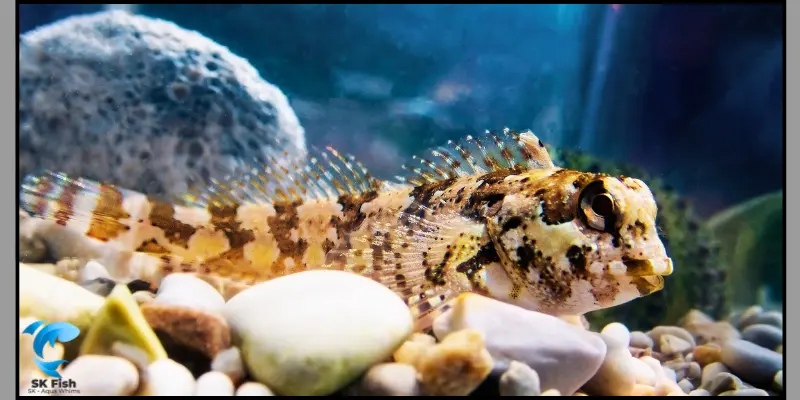
Barnacle Blenny
The Barnacle Blenny is characterized by its distinctive elongated body and mottled coloration, which ranges from shades of brown and grey to vibrant hues of red and orange. Despite its striking appearance, this fish remains small in size, typically growing to just a few inches in length.
Endemic to the tropical and subtropical waters of the Western Atlantic, Barnacle Blennies are renowned for their remarkable agility, speed, and unique survival strategy.
Aquarists often find the Barnacle Blenny to be a great addition to their tanks. To ensure the well-being of these fascinating creatures, it’s crucial to provide a well-established tank with a suitable environment. This includes ample rocks, live plants, and a proper diet tailored to their needs. By creating a conducive environment that mimics their natural habitat, aquarists can help Barnacle Blennies thrive and flourish in captivity.
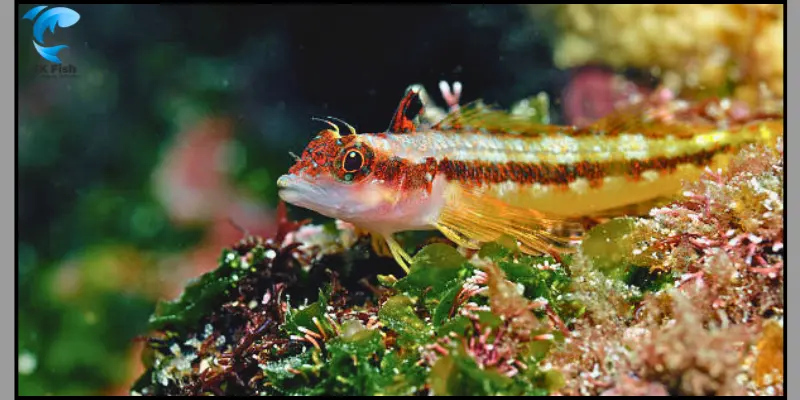
Flametail Blenny
The Flametail Blenny is an impressive species known for its elongated body and striking coloration. Renowned for its vibrant yellowish-orange color pattern along its backside and black coloration along its front body, this species is scientifically named “Enchelyurus flavipes”.
Flametail Blennies are primarily found in the Western Atlantic Ocean, although they are also native to tropical and subtropical regions of the Indo-Pacific. They typically inhabit coral reefs, preferring areas with numerous hiding places that protect them from predators.
With their energetic behavior and captivating appearance, Flametail Blennies make excellent additions to aquariums. To ensure their longevity in captivity, it’s crucial to provide a well-furnished tank equipped with plenty of rocks, plants, and moderate water flow. Creating an environment that mimics their natural habitat will contribute to their overall health and well-being.
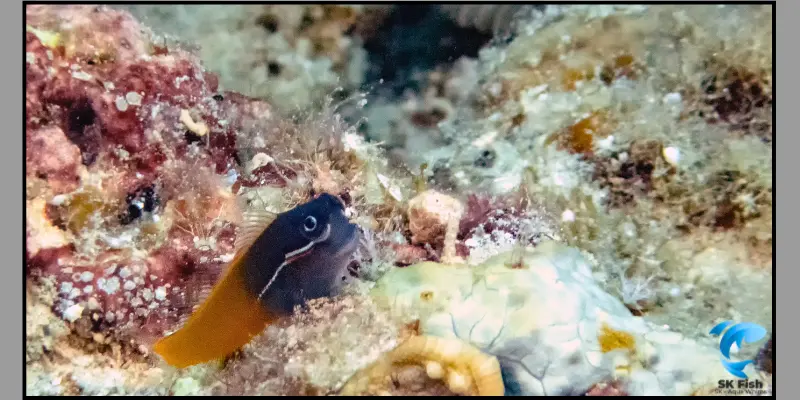
Orange Spotted Blenny
The Orange Spotted Blenny, scientifically known as “Blenniella chrysospilos,” is a small fish that typically grows to just a few inches in length. This saltwater species is native to the Indo-Pacific region.
With its elongated body adorned with small orange spots covering its entire body, the Orange Spotted Blenny is a peaceful species and a popular choice among aquarium enthusiasts. However, despite their peaceful nature, they may display aggression towards other fishes.
For aquarists looking to keep Orange Spotted Blennies, providing a suitable environment is essential for their well-being. This includes furnishing the tank with hiding places, live plants, and regular water changes to ensure their longevity and overall health. Creating a conducive environment will help them thrive and exhibit their natural behaviors in captivity.
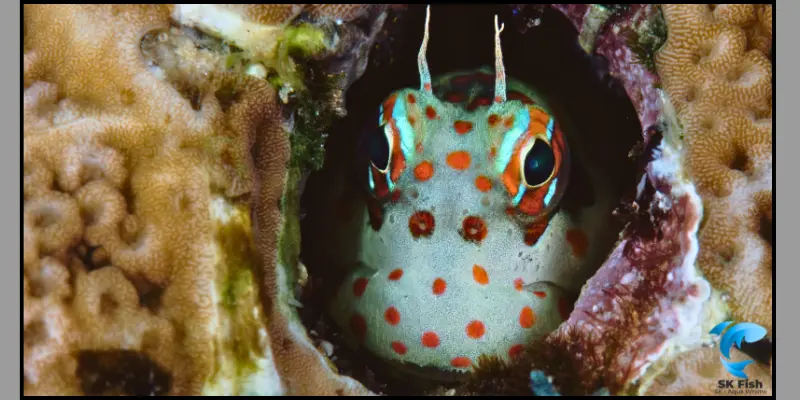
Tufted Blenny
The scientific name of the tufted blenny is “Ecsenius spp.” This colorful species is renowned for its hair-like appendages, which contribute to its charming appearance. It typically grows up to 3 inches in length.
Tufted blennies are native to the eastern central Pacific Ocean, where they inhabit coral reefs and shallow coastal waters. They exhibit a wide range of colors, including variations of brown, green, yellow, and orange, depending on their species.
For aquarists interested in keeping tufted blennies, it’s important to create a beautiful aquarium environment tailored to their needs. This includes maintaining regular water changes and offering a varied diet to ensure their well-being and vitality. Providing a healthy environment is crucial for their overall health and happiness.
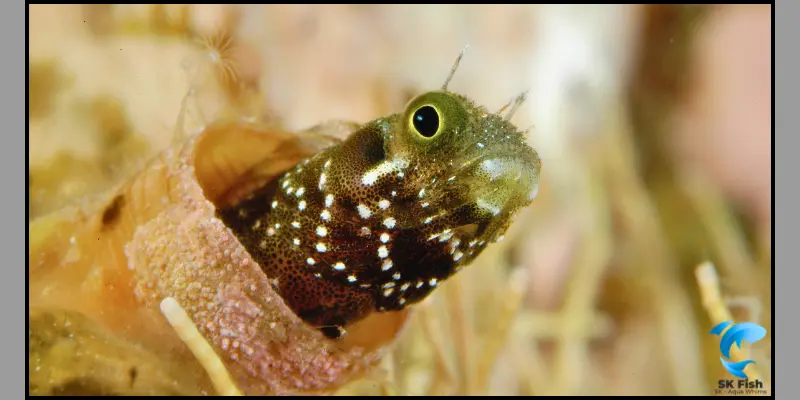
Conclusion
In this blog, we explored the fascinating world of blennies, uncovering their diverse types and remarkable traits. From their captivating color patterns to their preferred habitats and aquarium care tips, we delved into the intriguing facts surrounding these unique creatures. Now, we have gained insight into 10 different and unique blenny fishes, each renowned for its distinctive characteristics and stunning body coloration. I hope this journey has been as fascinating for you as it has been for us. Feel free to share your feedback in the comment section below.
FAQs
How many species of blenny are there?
Indeed, the world of blennies is incredibly diverse and fascinating, with a staggering 833 species spread across 130 genera. Each of these species possesses its unique behaviors, coloration, and markings, ranging from vibrant hues to intricate patterns and spots.
Which one is the easiest blenny to keep?
The Lawnmower Blenny is indeed widely regarded as one of the easiest blenny species to care for, making it popular among aquarium hobbyists, particularly beginners. Not only are they known for their algae-eating habits, which help to keep aquariums clean and free of algae, but they also exhibit peaceful behavior, making them compatible with a variety of tank mates.
Which one is the common type of blenny?
The Lawnmower Blenny is indeed a common and popular type of blenny among hobbyists. Known for its distinctive color pattern, typically mottled brown or olive green, this species is easily recognizable. With their large eyes and unique appearance, Lawnmower Blennies add character to any aquarium setup.
The largest blenny fish?
While the Midas Blenny, also known as Ecsenius Midas, is indeed a notable species known for its striking golden-yellow coloration and aggressive behavior, it typically does not grow as large as 8 inches in length. Midas Blennies generally reach a maximum size of around 4 to 5 inches. There may be variations in size based on factors such as habitat and individual specimens, but it’s not commonly recognized as the largest blenny species.

SK Fish is your trusted source for practical fish care tips and delicious seafood recipes. Our team is dedicated to providing reliable, well-researched content for fishing enthusiasts and home cooks alike.

- Be Respectful
- Stay Relevant
- Stay Positive
- True Feedback
- Encourage Discussion
- Avoid Spamming
- No Fake News
- Don't Copy-Paste
- No Personal Attacks



- Be Respectful
- Stay Relevant
- Stay Positive
- True Feedback
- Encourage Discussion
- Avoid Spamming
- No Fake News
- Don't Copy-Paste
- No Personal Attacks
